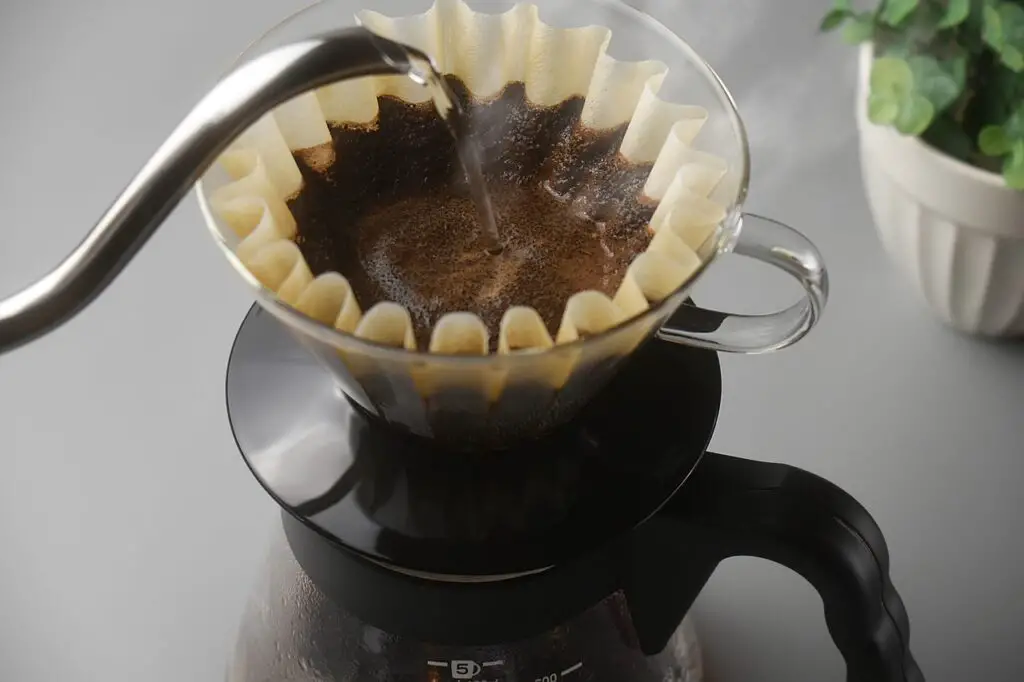
Pour-over coffee stands out for its clean taste and the control it gives you over each cup. If you’ve ever wondered why one brew tastes bright and balanced while another falls flat, the time it takes to brew often holds the answer. Brew time directly shapes the flavor by controlling how much the water pulls from the grounds. Get it right, and you end up with a cup that highlights the coffee’s natural notes. Miss it, and you might face bitterness or a weak result.
In pour-over brewing, you pour hot water over ground coffee in a filter, letting gravity do the work. This method dates back to the early 1900s, starting with simple designs like the Melitta cone. Today, tools like the Hario V60, Chemex, and Kalita Wave each bring slight differences to the process. The key lies in managing the flow so the water spends just enough time with the grounds.
Most experts agree that the perfect brew time ranges from 2.5 to 4 minutes, depending on your setup and preferences. For a standard single cup, aim for around 3 minutes. This window allows enough extraction for full flavor without pulling out harsh compounds. Shorter times can leave the coffee sour or thin, while longer ones often lead to over-extraction and a dry mouthfeel.
Several elements influence how long your pour-over takes. Grind size tops the list. A medium grind, similar to table salt, works for most setups and keeps the time in that 3-minute sweet spot. Go finer, like sand, and the water moves slower, extending the brew to 4 minutes or more.
Coarser grounds, resembling sea salt, speed things up, sometimes finishing in under 2.5 minutes. Adjust based on taste: if the coffee lacks body, try finer; if it tastes sharp, coarsen it.
Water temperature plays a big role too. Heat it to 195-205°F for best results. Hotter water extracts faster, shortening the brew time, while cooler water slows it down. For light roasts with fruity notes, stick to the higher end to draw out those flavors quickly. Darker roasts do better at lower temps to avoid pulling bitter elements.
Your pouring technique affects the pace as well. A steady, circular pour from a gooseneck kettle keeps the grounds evenly saturated. Start with a bloom pour—twice the weight of the coffee in water—to release gases, waiting 30-45 seconds. Then add the rest in stages, keeping the water level consistent. Pour too fast, and the time drops; pour slowly, and it extends. The goal is even contact without channeling, where water skips parts of the grounds.
The brewer you choose changes the timing. Conical designs like the V60 allow faster flow, often finishing in 2.5-3.5 minutes. Flat-bottom ones like the Kalita Wave hold water longer for more even extraction, aiming for 3-4 minutes. The Chemex, with its thick filters, typically takes 3.5-5 minutes, producing a cleaner cup. Match the brewer to your coffee: V60 for complex single origins, Chemex for smoother blends.
To brew a solid pour-over, gather your tools:
- brewer
- filter
- scale
- grinder
- kettle
- fresh coffee
Use 15-20 grams of coffee per 250-300 grams of water, starting at a 1:16 ratio. Grind medium, heat water to 200°F, and follow these steps:
- Rinse the filter with hot water to remove any paper taste and preheat the brewer.
- Add grounds, level them, and tare the scale.
- Bloom with 30-40 grams of water, stirring gently if needed, and wait 45 seconds.
- Pour the remaining water in two or three pulses, circling from center out.
- Let it drain fully, noting the total time.
If your brew finishes in 3 minutes, taste it. Adjust next time if needed.
Common problems arise from mismatched elements. If the brew drags past 4 minutes, the grind might be too fine, clogging the filter. Coarsen it or pour more aggressively. If it rushes through in under 2 minutes, finer grounds or slower pours can help. Stale coffee absorbs water differently, often slowing the process, so use beans roasted within the last two weeks. Hard water can alter flow too—filtered water keeps things consistent.
For different brewers, tweak the approach. With a V60, use a finer grind and faster pour to hit 3 minutes. The conical shape drains quickly, so focus on even saturation. Kalita Wave benefits from a medium grind and steady pours, targeting 3.5 minutes for balanced body. Chemex calls for coarser grounds and patient pouring, extending to 4 minutes for clarity.
Here’s a quick comparison in table form to show typical brew times:
| Brewer | Grind Size | Ideal Brew Time | Notes |
|---|---|---|---|
| V60 | Medium-fine | 2.5-3.5 minutes | Fast flow, suits light roasts |
| Kalita Wave | Medium | 3-4 minutes | Even extraction, forgiving for beginners |
| Chemex | Medium-coarse | 3.5-5 minutes | Thick filter, clean taste |
This table helps pick a starting point. Test and adjust for your setup.
Light roasts often need slightly longer times to develop acidity, while medium roasts hit the mark at 3 minutes for balance. Dark roasts brew faster to skip bitterness. Single-origin coffees from Ethiopia might shine at 3.5 minutes, pulling floral notes, whereas a Colombian blend could peak at 3 minutes for chocolate tones.
Consistency comes from measuring everything. Use a scale for grounds and water, a timer for pours, and notes to track changes. Over time, you’ll dial in what works for your taste.
Pour-over rewards patience with better coffee. By focusing on brew time, you control the outcome more than with automatic machines. Next time you set up, watch the clock and taste the difference.

